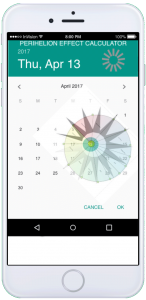Originally not an official festival, but celebrated by adherents to Mithraism as the birth of the new sun. The Emperor Aurelian was devoted to a single sun god and during his reign it became a public festival complete with chariot-racing in the Circus. He erected a temple to Sol Invictus in AD 274
How the Roman calendar celebrated Solar New Year over 2000 years ago is interesting. We still carry on many of the same traditions. Moreover, the Timing of the dates of celebration moved forward in time when our modern Gregorian calendar was set. Interestingly the holidays maintain their position even though the calendar moved around them.
Saturnalia
Timing of Saturnalia varied during the course of Roman history. began as feast days for Saturn (December 17) and Ops (December 19). with Julian calendar, Saturnalia on December 17 & 18; Opalia on December 19 & 20. during the empire, extended to a week (December 17-23); longer with other holidays. Associated holiday festivals Consualia, end of sowing season festival (December 15). Dies Juvenalis, Coming of Age for Young Men (mid-December).
Feast of Sol Invicta, the Unconquered Sun, set in 274 A. D. (December 25).
Brumalia, Winter Solstice on pre-Julian calendar (December 25).
Christmas (December 25), Christians move Christ’s birthday to this date in 336 A.D.
Janus Day and Beginning of Calendar Year (January 1), set in 153 B.C.; again in 45 B.C.
Compitalia
blessing of the fields rural festival (January 3-5).
Deities honored around Winter Solstice time
Saturn – God of Agriculture; merged with the Greek Cronos.
Ops – Goddes of Plenty; Mother Earth; partner to Saturn and Consus.
Sol Invicta – Sun God; connected with the Persian Mithra, honored by Roman soldiers.
Consus – God of Storebin of Harvested Grain. Juventas – Goddess of Young Manhood; related to Greek Hebe of Youthful Beauty.
Janus – God of Beginnings and Gates; Solar God of Daybreak; Creator God.
Celebrations included merry-making rest and relaxation connections with family and friends celebrating beginning of Solar year prayers for protection of Winter crops honoring Deities
Legacies of Saturnalia in contemporary holiday celebrations
Religious Rituals — joining in spiritual community to honor the Divine.
Honored Figures — Santa and Father Time
Saturn; Holy Mother — Ops.
Sacred Flames — candles lit and new fires kindled to represent new Solar year.
Greens — Holly given with gifts, homes decorated with wreaths and garlands.
Time Off from Work — government, schools, businesses closed; multiple days off.
Peace — dispensing of punishments suspended and courts closed; wars ceased.
Relaxing with Family and Friends — renewing bonds, sharing celebration.
Gift Giving — dolls to children, candles to friends; fruit symbols representing increase.
Feasting — sharing food with family and friends; on-going eating and drinking.
Helping Less Fortunate — class distinctions suspended; food for all; masters waiting on servants.
Exuberant Play — masquerades, gaming, gambling, mock king, jokes, partying, letting loose.
Paper Hats — soft hats (pilei) worn at Saturnalia banquets to signify informality. Dancing in the New Solar Year — music and dancing.
========================
Saturnalia Winter Solstice in Pagan Rome by Selena Fox
This was first published for a workshop at 1993 Circle Sanctuary Community Yule Festival.



